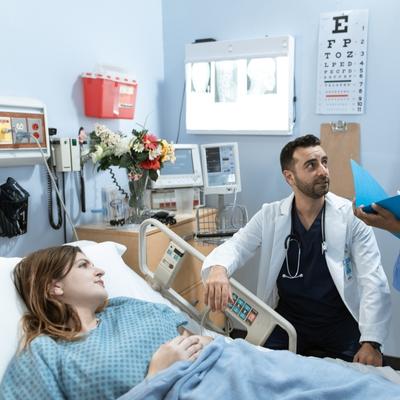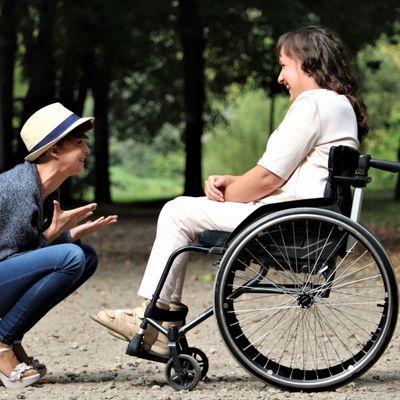Selecting the appropriate patient lift sling is a critical decision that directly impacts both patient safety and comfort. Whether you're a healthcare professional or a caregiver, understanding how to choose the right sling size and type is essential for ensuring effective, dignified, and secure patient transfers. This comprehensive guide will walk you through the process of selecting the perfect sling, considering factors such as patient needs, lift compatibility, and material choices.
The Evolution of Patient Lift Slings: From Basic to Specialized
Patient lift slings have come a long way from their early designs, reflecting advancements in medical understanding and technology.
Traditional Approaches
- One-size-fits-all designs
- Limited material options
- Basic functionality focused solely on lifting
- Minimal consideration for specific patient conditions
Modern Innovations
- Diverse sizes and shapes for personalized fit
- Advanced materials for comfort and hygiene
- Specialized designs for specific transfer needs
- Integration of safety features and smart technology
- Focus on patient dignity and caregiver ergonomics
Key Considerations for Sling Selection
Essential Factors in Choosing the Right Sling
- Patient Size and Weight: Accurate measurements ensure proper fit and support
- Transfer Type: Different slings for bed-to-chair, toileting, or bathing transfers
- Patient Condition: Considering mobility level, muscle tone, and specific health needs
- Lift Compatibility: Ensuring the sling works with your specific lift model
- Material Properties: Choosing between durability, comfort, and specialized functions
- Safety Features: Looking for reinforced stitching, clear labeling, and non-slip materials
- Ease of Use: Considering both patient comfort and caregiver efficiency
Measuring for the Perfect Fit
Accurate measurements are crucial for selecting the right sling size. Follow these steps:
- Weight: Use a scale or refer to recent medical records for the patient's current weight.
- Height: Measure from the top of the head to the base of the feet while the patient is lying flat.
- Torso Length: Measure from the shoulders to the base of the spine.
- Hip Width: Measure across the widest part of the hips.
- Thigh Circumference: Measure around the thickest part of each thigh.
Use these measurements to compare with manufacturer sizing charts for each specific sling model.
Types of Slings and Their Specialized Uses

Universal Full-Body Sling
A versatile sling suitable for most general transfer needs.
- Provides full-body support
- Suitable for patients with limited upper body control
- Compatible with various lift models
- Available in multiple sizes for optimal fit
Other specialized sling types include:
- Toileting Slings: Feature a commode opening for hygiene tasks
- Bathing Slings: Made of quick-drying mesh material for water exposure
- Standing Slings: Support patients during sit-to-stand transfers
- Amputee Slings: Designed to accommodate patients with limb loss
- Bariatric Slings: Reinforced for higher weight capacities
Sling Materials: Choosing the Right Fabric
The choice of sling material can significantly impact patient comfort and transfer efficiency:
- Polyester: Durable and easy to clean, suitable for most general transfers
- Mesh: Quick-drying and breathable, ideal for bathing and high-temperature environments
- Padded: Provides extra comfort for patients with sensitive skin or during long periods of use
- Disposable: Single-patient use for strict infection control protocols
- Slip-Fit: Reduces friction during positioning, beneficial for patients with fragile skin
Specialized Slings for Specific Patient Needs

Hoyer Deluxe Power Lift
A versatile power lift compatible with various specialized sling types.
- Supports multiple sling attachments
- Suitable for diverse patient needs
- Easy-to-use control system
- High weight capacity for bariatric care
When selecting slings for patients with specific conditions, consider the following:
- Amputee Slings: Provide additional support and balance for patients missing limbs
- Bariatric Slings: Offer reinforced construction and wider dimensions for larger patients
- Positioning Slings: Aid in turning and repositioning patients in bed
- Walking Slings: Support patients during gait training and rehabilitation
For more information on specialized patient care solutions, check out our guide on Bariatric Patient Lifts: Specialized Solutions for Higher Weight Capacities.
Safety Features to Look For
When selecting a sling, prioritize these safety features:
- Reinforced stitching at stress points
- Color-coded loops for easy and correct positioning
- Non-slip materials to prevent patient sliding
- Clear weight capacity labeling
- Compatibility indicators for specific lift models
Sling Maintenance and Replacement
Proper care and timely replacement of slings are crucial for patient safety:
- Inspect slings before each use for signs of wear or damage
- Follow manufacturer guidelines for washing and care
- Replace slings at least annually or more frequently with heavy use
- Immediately remove damaged slings from service
Choosing the Right Sling: A Step-by-Step Guide
Follow this process to select the most appropriate sling for your patient:
Common Mistakes to Avoid
Be aware of these common errors in sling selection:
- Choosing a sling based solely on patient weight without considering other measurements
- Neglecting to check compatibility with the specific lift model being used
- Overlooking the need for specialized slings for specific conditions or transfer types
- Failing to regularly inspect and replace slings according to manufacturer guidelines
Conclusion: The Impact of Proper Sling Selection
Choosing the right patient lift sling is a critical decision that directly impacts patient safety, comfort, and dignity. By understanding the various types of slings, materials, and sizing considerations, caregivers can ensure that each patient receives the most appropriate support for their specific needs.
Remember that sling selection is not a one-time decision. As patient conditions change or new transfer needs arise, it's important to reassess and adjust sling choices accordingly. Regular training for caregivers on proper sling selection and use is also crucial for maintaining a safe and effective transfer process.
By prioritizing proper sling selection, healthcare facilities and home caregivers can significantly enhance the quality of care, reduce the risk of injuries, and improve the overall transfer experience for both patients and caregivers.
Find Your Perfect Patient Lift Sling Today
Explore our wide range of patient lift slings, designed to meet diverse needs and ensure maximum safety and comfort. From universal slings to specialized options, we have the right solution for every patient.
Shop Patient Lift Slings Now








